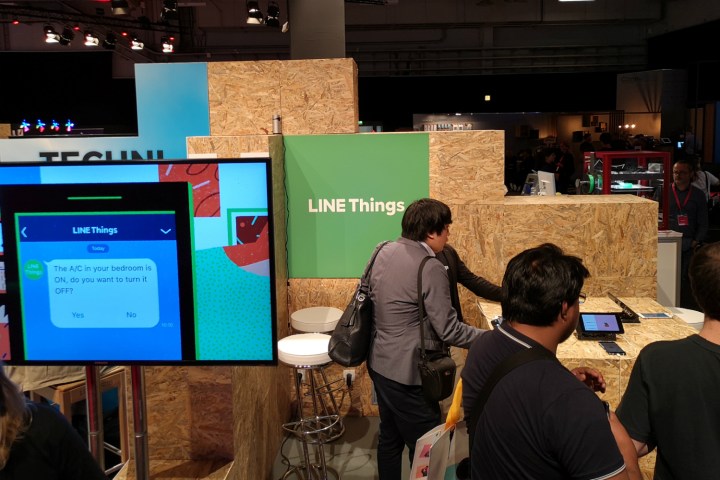
Messaging apps are becoming more multi-functional. Apart from video calls and photo sharing, we can makes future plans through Facebook Messenger, and even shop through apps like WeChat. Line, the messaging app known for its cute stickers and artificial intelligence endeavours, showed off its plans at IFA 2018 to integrate the Internet of Things into the app.
Called Line Things, this is an IoT control platform with a Line-like twist. That means you can expect an eye-catching design and functionality that fits in with Line’s company mission statement of ‘closing the distance.’ What this means here is to make the complicated world of smart home products simpler and easily accessible through an app that has become ubiquitous in several parts of the world. Rather than a multitude of apps and hundreds of separate notifications coming through your phone, you just have one familiar source.

The platform is still in the very early stages of development and does have not have any compatible hardware yet, so our demonstration at IFA was more proof-of-concept using phones and tablets. The most intriguing was a connected plant monitor — the kind you stick in a plant pot that reminds you to water it — which showed how Line Things will work in the real world. The Bluetooth monitor would link with Line Things, ready to control through the app.
You could choose your plant type, and Line Things will assign health points to the plant, which change according to the amount of light, water, and ambient temperature the plant receives. This makes it easy to take care of the plant through an understanding of its environment. Alterations were made using sliders, and check out the cute emojis in the corner of the app screen showing the potential outcome of your ‘care.’

We also saw Line Things work with a connected microwave, where cooking instructions for meals can be pulled from the internet and automatically sent to the microwave. The upside here is instead of another app requiring setup, everything comes through Line — an app its users already know well. The other advantage is notifications. Instead of multiple apps, you get alerts from connected products linked with Line Things through one app, and interact with them in the normal way.
Familiarity is very important when adopting any new technology, and the smart home can be a dense, world of confusion the newcomer. Line Things could take away fears, and similarly make it easier for companies to link connected products together with others in an easy way. Line also has its own range of smart speakers available in Japan, potentially adding voice control through Line Things too. On the flip side of that, Line Things is another service entering the already busy smart home world. It also needs the involvement of developers and manufacturers to take off, which was likely part of Line’s intentions around showing Line Things at IFA.
According to Line, it plans to launch Line Things in the first half of 2019, and it will first be available in the messaging app’s core markets of Japan, Taiwan, Thailand, and Indonesia. Provided it’s successful, Line intends Line Things to become a global service in the future.




